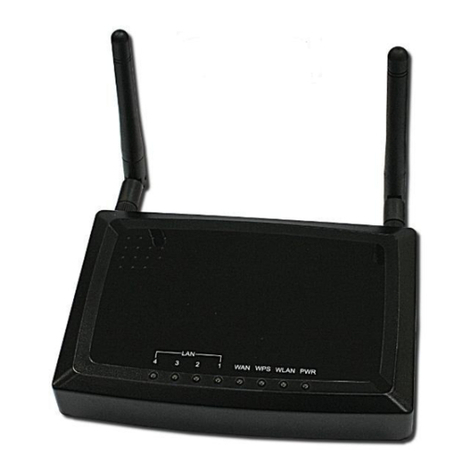
USER’S MANUAL Version: 1.0
ii
Table of Contents
TERMINOLOGY..........................................................................................................................IV
1INTRODUCTION.................................................................................................................... 1
1.1PRODUCT FEATURES ............................................................................................................ 1
2INSTALLATION ..................................................................................................................... 1
2.1HARDWARE INSTALLATION .................................................................................................. 1
2.2SOFTWARE INSTALLATION.................................................................................................... 2
3SOFTWARE CONFIGURATION ......................................................................................... 3
3.1PREPARE YOUR PC TO CONFIGURE THE WLAN BROADBAND ROUTER ................................ 3
3.2CONNECT TO THE WLAN BROADBAND ROUTER ................................................................. 5
3.3MANAGEMENT AND CONFIGURATION ON THE WLAN BROADBAND ROUTER....................... 6
3.3.1Login.......................................................................................................................... 6
3.3.2Web Home.................................................................................................................. 6
3.3.3Status.......................................................................................................................... 7
3.3.4System........................................................................................................................ 8
ITime........................................................................................................................... 9
IILanguage.................................................................................................................. 10
IIIAdministration ......................................................................................................... 11
IVBackup / FW upgrade .............................................................................................. 11
3.3.5Network.................................................................................................................... 12
ILAN Settings ........................................................................................................... 13
IIWAN Settings........................................................................................................... 14
3.3.6Firewall.................................................................................................................... 16
ISYN-flood protection............................................................................................... 16
IIPort Forwarding....................................................................................................... 17
3.3.7Wireless Settings...................................................................................................... 18
I2G/5G Basic Settings............................................................................................... 19
IISSID Security........................................................................................................... 20
IIIGuest........................................................................................................................ 21
IVWPS ......................................................................................................................... 21
3.3.8Logout...................................................................................................................... 22




























